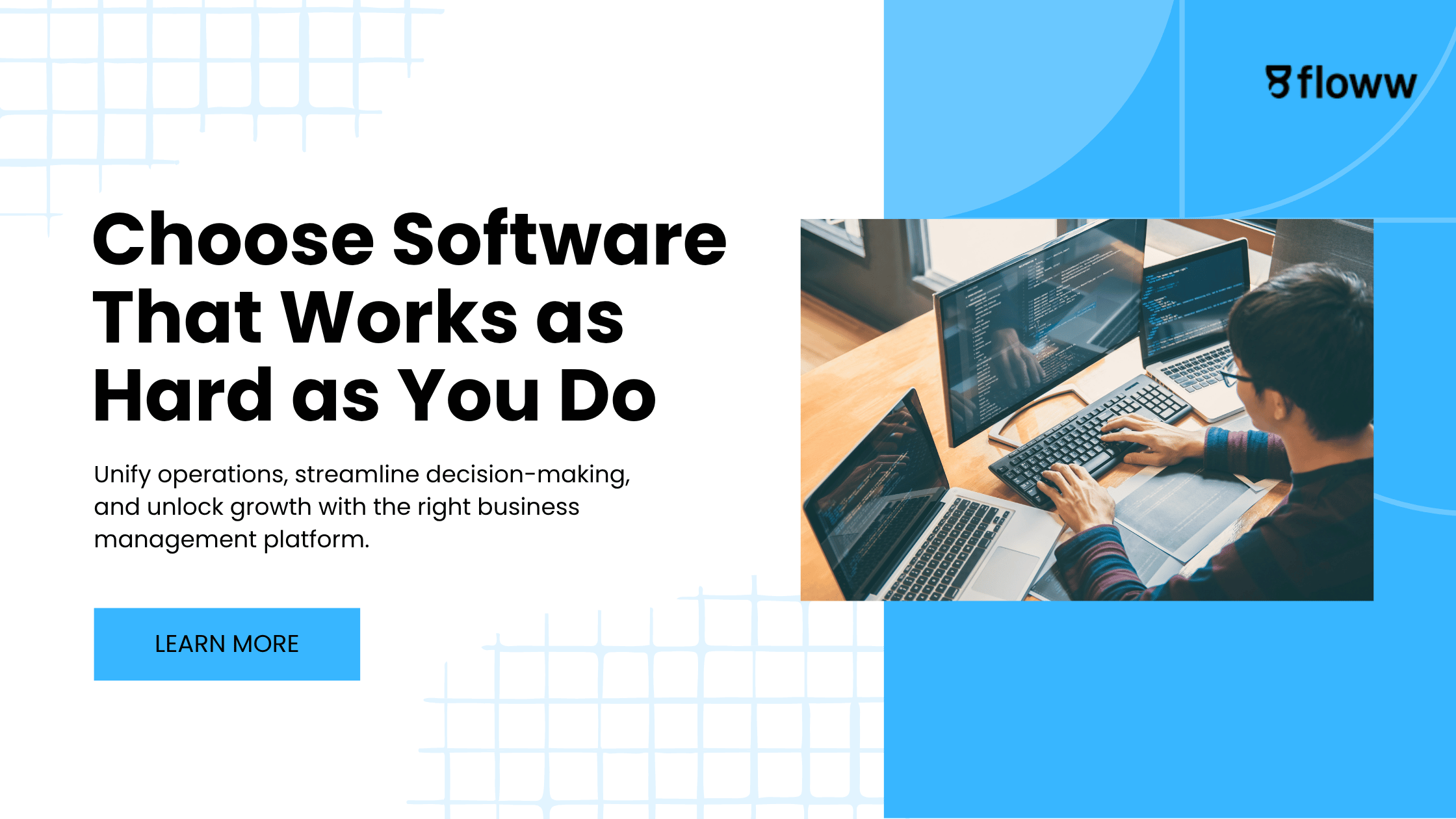The Complete Guide To Choosing the Right Software For Business Management
Choosing the right software for business management can make or break your growth. This guide walks you through evaluating features, scalability, AI capabilities, and ease of use.

Running a business today means juggling a thousand moving parts. This includes operations, people, money, communication, and growth. And honestly, spreadsheets and ineffective apps just don’t cut it anymore. That’s where business management software comes in.
But with a market overflowing with options, picking the right one can feel like choosing a life partner. You want something reliable, flexible, and ready to grow with you, and this blog will guide you towards that.
Why You Can’t Afford to Wing It Anymore

In the early days, businesses got by with basics like Google Sheets, email threads, sticky notes on monitors. But as your team grows and your workflows get more complex, inefficiencies creep in. Teams miscommunicate. Data lives in five different tools. Deadlines slip through the cracks. The wrong software (or none at all) becomes a silent business killer.
The right business management software can automate tasks, centralise data, boost collaboration, and help you make faster, better decisions.
Also Read: Why Modern Time Tracking Needs To Reflect Reality
What Exactly Is Business Management Software?
Let’s clear the air. Business management software is not one-size-fits-all. At its core, it’s a digital toolkit that helps manage different aspects of your business, be it HR, finance, workflows, communication, inventory, reporting, and more.
Some tools are specialised, like accounting-only software, while others, like Atom Suite, aim to offer an all-in-one ecosystem. The key is figuring out what your business needs before you go shopping.
Start With Your Needs, Not Features
Don’t get distracted by shiny dashboards and buzzwords. Start with a gut check. Ask yourself what’s breaking down in your current workflow, which tasks you are still doing manually, what your team’s biggest daily frustrations are, and whether you're spending more time managing tools than actually working. Write down your core priorities. It could be anything from automating invoices to better internal communication or tracking tasks more efficiently. Then ask yourself if you need a generalist platform or best-in-class tools for each department.
Think About Scalability

Right now you’re a 10-person team. But what about next year? Good software should grow with you without forcing you into a costly migration later. Look for something that allows you to add what you need when you need it.
The software should support flexible user roles and permissions and allow you to scale without limiting the number of projects, invoices, or customers. You want software that doesn’t just support your business today, but doesn’t break under tomorrow’s pressure.
Integration Isn’t Optional Anymore
Even if you don’t opt for an all-in-one platform, your tools need to talk to each other. If your invoice software doesn’t talk to your CRM, or your HR tool doesn’t sync with payroll, you will unnecessarily add five hours of manual work to someone’s week. The smarter move is to look for software that integrates natively with tools you already use. If you need something custom, having open APIs makes integration more seamless. Atom Suite, for instance, natively integrates HR, workflows, email, and finance so you don’t need six tools doing six different jobs.
User Experience is More Important Than a Feature List

Your team shouldn’t need a two-week course to use the software. Clunky UX kills adoption, and software only works when people actually use it. Is the dashboard intuitive? Can team members get started without hand-holding? Does the mobile version feel just as smooth? Modern business software should feel like using your favourite personal app: simple, fast, and frustration-free. If the experience feels like a chore, it’s not the right fit.
Real-Time Data is a Game Changer
Say goodbye to chasing reports or wondering how your team’s performing. Good business software puts insights at your fingertips. Instead of sifting through old spreadsheets, you should be able to glance at real-time dashboards, access custom reports, and receive alerts.
Also Read: Floww's Big Moment In Print
Don’t Ignore Support and Community
Even the best software will have a learning curve. What matters is how quickly you can get help when you need it. Does the platform offer proper onboarding support for your team? Are you stuck with email tickets or is live chat available? Is there an active knowledge base or community forum? Great support can be the difference between a smooth rollout and a total mess.
Cost Should Be Judged by Value, Not Price
Don’t just compare pricing pages. Look at the full cost. How many users are included in the plan? Are essential features locked behind higher tiers? What’s the real return on investment in terms of time saved, errors reduced, and growth unlocked? Sometimes, the cheapest option costs more in the long run. It’s wiser to invest in software that delivers true value rather than one that simply appears affordable.
A Quick Mental Checklist Before You Commit
Still stuck between options? Run through a mental checklist. Does the software align with your specific business needs? Can it scale with your team’s growth? Does it offer seamless integrations? Is it user-friendly for non-tech-savvy team members? Does it give you usable insights instead of overwhelming raw data? And finally, is there solid customer support to back it up? If the answer is yes across the board, you're on the right track.
Why Atom Suite Might Be Your Perfect Fit

If you're a growing business tired of juggling multiple disconnected tools, Atom Suite could be the all-in-one solution you've been waiting for. With built-in modules for HR, workflows, email, books, and automation, Atom Suite cuts the clutter and gives your team a single command center. You get HRMS, email, and accounting in one ecosystem. Data syncs automatically across modules, and the interface is designed to work for everyone. Real-time dashboards and reports keep you ahead, and the pricing is designed to grow with your team, not drain your budget. Atom Suite isn’t just software, it’s a business enabler.
Take a Free Demo and Decide For Yourself.
Conclusion
Choosing business management software isn’t just an IT decision. It is a strategic one. Get it right, and you unlock agility, clarity, and serious growth. Get it wrong, and you’re stuck with firefighting issues that should have been solved months ago. Start with your business, not the buzzwords. Think long-term. And pick a partner, not just a product. Your future team will thank you for it.

